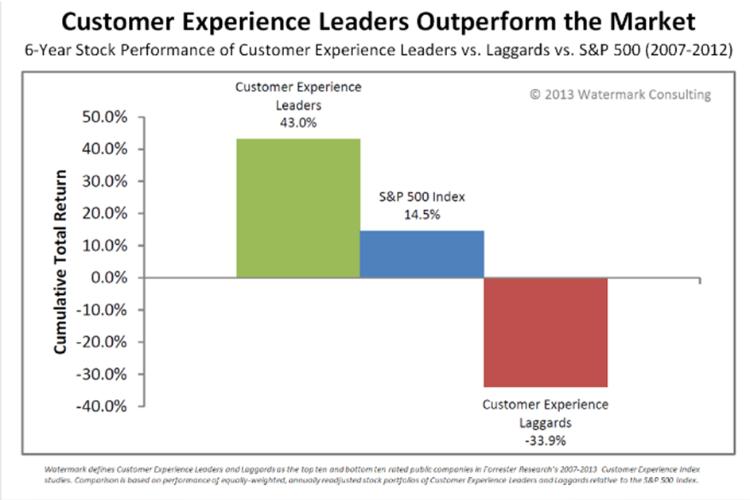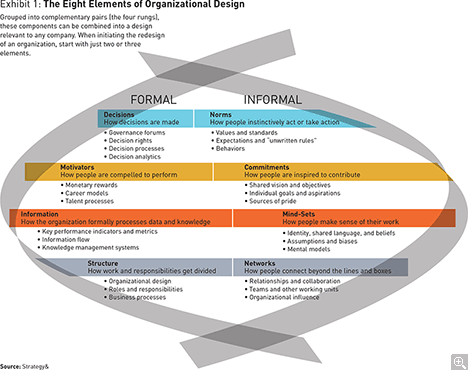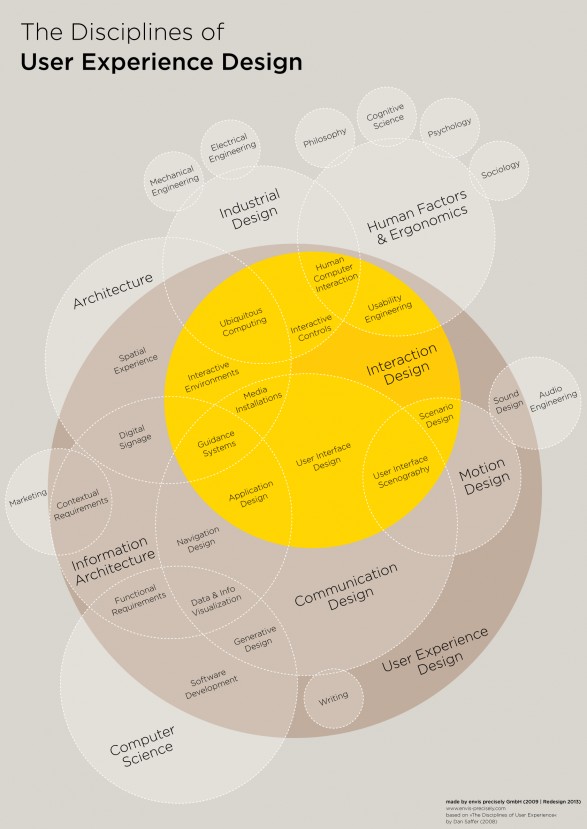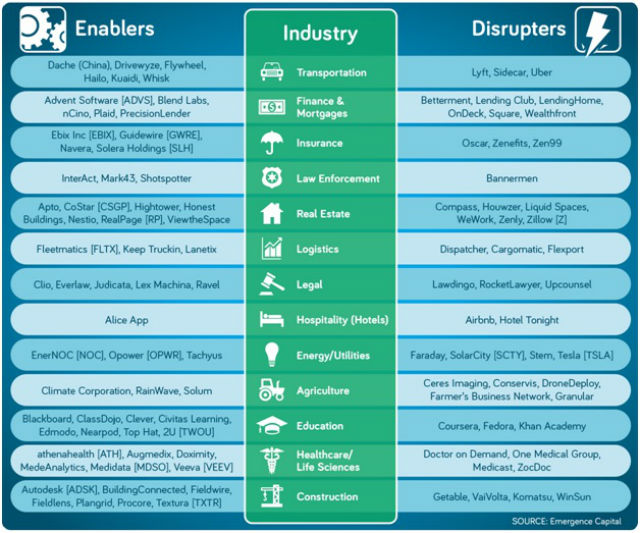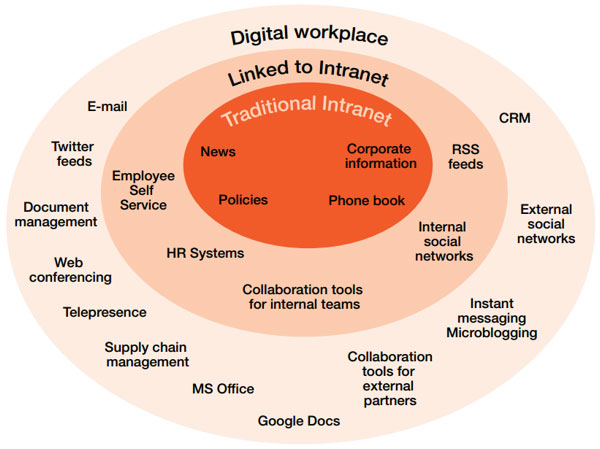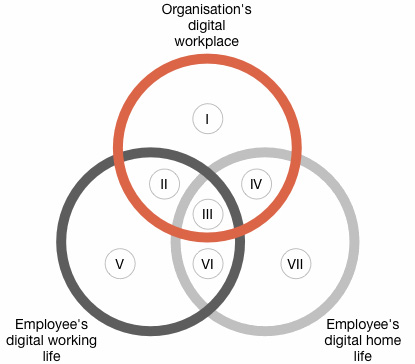-
“Pour réussir une stratégie Big Data, il faut en finir avec les gens qui se sentent propriétaires de certains silos de données dans l’entreprise. “
-
« Dans le Big Data, il y a un énorme aspect organisationnel, très souvent sous estimé, » pointe-t-il. Il précise : » il y a des entreprises où il y a énormément de silos informationnels. il y a des gens qui considèrent qu’ils sont propriétaires de ces silos. La première démarche est de tordre le cou à cette logique de propriété des données. »
-
l’impulsion doit venir de la direction générale » affirme-t
-
le Chief Data Officer est celui qui va mordre les mollets de ces différents silos informationnels, le CIO aura une vision transverse des flux de l’entreprise, et le CTO mettra en place les outils technologiques pour exploiter ces données dans de bonnes
-
Enormément d’entreprises n’ont pas compris ces aspects organisationnels et se focalisent sur un ou deux projets Big Data, mais pas sur une démarche globale. Il serait temps qu’elles accélèrent »
-
-
Datafloq – The One-Stop Shop for Big Data
“In the modern corporate environment, intangible assets can sometimes substantially trump the value of tangible assets and are critical components impacting a company’s successful future. No longer relegated to the background as an undefined metric that might be incapable of calculation, a company’s reputation is increasingly recognized as a crucial component of a company’s overall valuation.”
-
In a 2013 study, “Exploring Strategic Risk,†Deloitte reported that 300 executives from around the world identified reputation as the #1 strategic risk area.
-
he top five technology threats to business models are: social media (47%), data mining and analytics (44%), mobile applications (40%), cloud computing (38%) and cyber-attacks (36%).
-
The Average Revenue per User (“ARPUâ€) for companies like Facebook, Twitter, LinkedIn, and Pandora, is tied directly to the amount of data these sites acquire from and maintain about their users, such as, location, credit card information, relationships, and personal preferences.
-
Entities should consider in advance the legal implications of their intended use of Big Data and how that use will be perceived by the public. Even if the intended use of data is compliant with law, companies should consider how customers and the public at large will react to disclosure of the company’s data practices
-
Companies also must consider the impact of data-related litigation on their reputation
-
Since data is the lifeblood — the new oil — for companies that want to compete and thrive in the global marketplace, deciding in advance how data will be collected, stored, secured, sold and used should be a top business priority
-
-
Correlations Between Customer Experience and Creation of Wealth | Gregory Yankelovich | LinkedIn
“Many academic studies were published over the last two decades that examined the correlations between improvements in customer satisfaction/advocacy/experience and increase in sales, profits, market share or share value. Below are some examples”
-
Many academic studies were published over the last two decades that examined the correlations between improvements in customer satisfaction/advocacy/experience and increase in sales, profits, market share or share value. Below are some examples
-
-
CXM practitioners are often focused too much on the complexities of methodologies for measuring, and statistics.
-
- CXM practitioners often lack the business domain knowledge required for the translation of market research findings into specific recommendations
-
When we do amass the knowledge and courage to make the recommendations, our bosses and clients want us to predict their outcomes.
-
1. Start to think more as an economist than a statistician
-
2. Stop debating which methodology is better
-
3. Stop asking your customers the “on the scale from A to Z…†questions and pretending that to be the Voice of Customer.
-
4. Model your recommendations extensively before you present them to your boss or client.
-
-
How Life Insurers Can Bring Their Business into the 21st Century – HBR
“Faced with such dramatic shifts in their market, many insurers have fallen into the classic trap of trying to figure out how to sell their existing products, rather than creating new sales engagement models that focus on customers’ real needs.”
-
Understanding the customer. Insurers should be trying a lot harder to discover what customers of today really want. Rather than letting the assumptions attached to their existing products limit how they explore and define customer needs, insurers can gain in-depth insight into what motivates customer decision
-
Developing customer-oriented offerings. New products should be based on real customer needs and made available at a range of price points through a variety of channels.
-
Providing a better customer experience. Life insurers need to start thinking less in terms of life insurance as an “event†purchase – bought once and kept in perpetuity – and more as a relationship.
-
Increasing efficiency. Many life policies are still paper-based, relying on manual processes for administering policies and paying out settlements. By automating workflow and decision support, insurers can cut costs while giving customers the immediate responses, tailored products, and personalized service they want.
-
-
2015: Year of the ‘Internet of Me’? | L’Atelier : Accelerating Business
“The ‘Internet of Me’ places even greater emphasis on the customer experience than the ‘Internet of Things’, and once again raises the question: how is the data being used?”
-
All these statistics herald the emergence of new marketing channels for companies, from wearable electronics to connected TV. However, this is not just about companies moving towards greater customisation of products and services. Any business initiative in this field needs to be part of a real desire to focus on the individual and his/her experience as a consumer. The Accenture report stresses moreover that sharing skills and expertise through partnerships between companies is now becoming a key factor.
-
Experts underline that brands should now be thinking of connected objects essentially as new points of contact with consumers, even if this means relegating the promotion and sale of their products and services to second place on their list of priorities.
-
these firms must not forget that one of the key issues affecting the Internet of Me is the trust the consumer has in the brand
-
although 67% of all customers agreed to share their personal data with a company providing goods or services, this figure fell to 27% if the company admitted that it intended to pass the information on to a third party
-
Fully 85% of the managers polled by Accenture believe that the average consumer has only a vague idea about how firms use their data
-
it is now becoming absolutely essential for firms to ‟be extremely clear on just how secure the data they use is â€
-
-
10 Principles of Organization Design
“These fundamental guidelines, drawn from experience, can help you reshape your organization to fit your business strategy.”
-
1. Declare amnesty for the past. Organization design should start with corporate self-reflection: What is your sense of purpose? How will you make a difference for your clients, employees, and investors? What will set you apart from others, now and in the future? What differentiating capabilities will allow you to deliver your value proposition over the next two to five years?
-
2. Design with the “DNA.†Organization design can seem unnecessarily complex; the right framework, however, can help you decode and prioritize the necessary elements. We have identified eight universal building blocks that are relevant to any company, regardless of industry, geography, or business model. These building blocks will be the elements you put together for your design (see Exhibit 1
-
-
3. Fix the structure last, not first. Company leaders know that their current org chart doesn’t necessarily capture the way things get done—it’s at best a vague approximation. Yet they still may fall into a common trap: thinking that changing their organization’s structure will address their business’s problems.
-
4. Make the most of top talent. Talent is a critical but often overlooked factor when it comes to org design. You might assume that the personalities and capabilities of existing executive team members won’t affect the design much. But in reality, you need to design positions to make the most of the strengths of the people who will occupy them.
-
5. Focus on what you can control. Make a list of the things that hold your organization back: the scarcities (things you consistently find in short supply) and constraints (things that consistently slow you down). Taking stock of real-world limitations helps ensure that you can execute and sustain the new organization design.
-
6. Promote accountability. Design your organization so that it’s easy for people to be accountable for their part of the work without being micromanaged. Make sure that decision rights are clear and that information flows rapidly and clearly from the executive committee to business units, functions, and departments.
-
7. Benchmark sparingly, if at all. One common misstep is looking for “best practices.†In theory, it can be helpful to track what competitors are doing, if only to help you optimize your own design or uncover issues requiring attention.
-
8. Let the “lines and boxes†fit your company’s purpose. For every company, there is an optimal pattern of “lines and boxesâ€â€”a golden mean. It isn’t the same for every company; it should reflect the strategy you have chosen, and it should support the most critical capabilities that distinguish your company.
-
9. Accentuate the informal. Formal elements like structure and information flow are attractive to companies because they’re tangible. They can be easily defined and measured. But they’re only half the story. Many companies reassign decision rights, rework the org chart, or set up knowledge-sharing systems—yet don’t see the results they expect.
-
That’s because they’ve ignored the more informal, intangible building blocks. Norms, commitments, mind-sets, and networks are essential in getting things done. They represent (and influence) the ways people think, feel, communicate, and behave.
-
10. Build on your strengths. Overhauling your organization is one of the hardest things for a chief executive or division leader to do, especially if he or she is charged with turning around a poorly performing company. But there are always strengths to build on in existing practices and in the culture.
-
-
“What made you to choose that particular restaurant? What was your first impression as you walked in? Were you asked to wait till you were ushered to an available seat? How was the menu arranged? Did food come quickly enough? How did it taste? How was the customer service? Did your squaring up go smoothly? Would you go back again?
Your answers to these questions, including all the emotional highs and lows, encompass the restaurant’s user experience (UX).”
-
When the point of contact between the product and the people becomes a point of friction, then the industrial designer has failed.
-
Taylor and his supporters shaped the early vision of what interactions between laborers and their tools should be like.
-
While Toyota, like Ford, valued efficiency in engineering and production, it also sought its employees input
-
The roaring success that Toyota experienced as a result brought new attention to the role of human interaction with technology.
-
His imaginative use of technology to bring people joy continues to inspire user experience designers.
-
PARC, gave form and function to the design of computers for human use.
-
Don Norman joined Apple to help with the research and design of its upcoming line of human-centered products. He asked to be called “User Experience Architect,” marking the first use of the term in a job title.
-
The genius of the original iPhone, arguably, lay in its fusion of superior hardware and software to provide connectivity through a revolutionary capacitive touchscreen, making the physical keyboards of other phones obsolete
-
This will bring to light the need for more specialized skills in the multidisciplinary practice, including user research, graphic design, customer advocacy, software development, and more.
-
-
-
“WeWashing is a new term that refers to the abuse of words like “sharing†and “community.†Use #WeWashing to identify and critique this abuse.”
-
I am usually a satisfied user of services like AirBnb and Uber, even if I don’t 100% agree with all of their corporate policies and practices. But I cringe every time I hear these companies, and others like it, described as part of the “Sharing Economy.â€
-
WeWashing is when corporations, brands, and other groups use the language of “sharing†and “community†to describe what are essentially capitalist commercial transactions.
-
Words like “we,†“sharing†and “community†may be common, but they are also meaningful.
-
As such, so-called “sharing economy†companies are free to use these words as they like, but we are also free to use them in ways that work for us
-
By calling out incidents of WeWashing, we can preserve the meaning of altruistic sharing and the bonds of community beyond narrowly-defined economic transactions.
-
At best, the “sharing economy†label is a brand marketing strategy that attempts to take advantage of the “feel good†halo associated with words like “community†and “sharing.
-
However, we need to recognize that there are different kinds of sharing and different kinds of community, j
-
The issue is not with corporations co-opting these terms, but more so for us to reclaim how we abide to our “ideal†notion of solidarity, sharing and community.
-
-
How organizations are digitally transforming themselves – Business Today
“Digital transformation is the new big consulting opportunity for firms like Accenture, IBM and Capgemini. What should be the new organisational structure in a digital era, what are the right tools to embrace, what should be the digital vision – these are some questions that companies are asking and hiring consultants for.”
-
While some organisations started with social media engagement in digital, others changed their internal structures.
-
In several companies the marketing department is where the initiative first began. Only later did it seep in that the whole organisation needed to be rewired.
-
If there was one ideal entry point to get into digital transformation, it would be through analytics, feels Mellor. “Analytics is like turning the lights on in a dark room. It helps you see the path ahead.”
-
A consensus is that digital has to seep into the DNA of every single employee and percolate from leadership down.
-
the next step is to create and share a digital transformation vision.
-
“Technology for its own sake is a common trap,
-
The other pitfall in digital transformation is creating too long a roadmap.
-
-
Transformation digitale : les RH et les dirigeants attendus au tournant | Petit Web
“Les retours d’expérience d’ING, illustrant une étude sur la transformation digitale menée auprès de 273 salariés de grandes entreprises, qu’ils soient aux départements RH, marketing, finance, juridique ou autre.”
-
Nos collaborateurs ont fait leur transformation digitale par les outils qu’ils utilisent au quotidien. Ils attendent de l’entreprise qu’elle suive tout ça
-
“On observe une vraie attente des collaborateurs pour travailler différemment, avec de nouveau modes de management”. Mais les cadres dirigeants sont souvent perdus face aux demandes de leurs employés pour davantage de transparence, de collaboration et d’autonomie.
-
Pour les accompagner, la DRH a mis en place des formations “sur un mode pas académique, plutôt avec des ateliers et du coaching”, notamment autour du lean management.
-
Pourtant, 63% d’entre eux considèrent que leur entreprise explique mal sa stratégie digitale ou qu’elle en parle plus qu’elle n’agit.
-
seuls 57% des salariés déclarent que leurs dirigeants ont intégré le digital dans leur leadership quand seulement 50% d’entre eux considèrent que les dirigeants sont des modèles inspirants dans leur manière de gérer la transformation digitale.
-
alors que seuls 4% des opérationnels déclarent avoir peur de la transformation digitale, les RH sont plus d’un tiers à les considérer sur la défensive
-
. Pour la grande majorité des salariés (9 sur 10), le digital est perçu comme une opportunité plus que comme une menace, mais seulement 27% des répondants se considèrent tout à fait à l’aise avec.
-
-
Le numérique révolutionne le travail (et voilà pourquoi vous devez vous en soucier)
“La révolution numérique ne perturbe pas que le business. Le travail aussi évolue sous les coups de boutoir du digital. Contrats, outils, législations, missions, relations patron-salarié… La transformation digitale perturbe nos bonnes vieilles organisations et réglementations pensées, il faut le dire, pour une société industrielle. L’Usine Nouvelle a enquêté pour décrypter ces changements, sans angélisme ni pessimisme. “
-
La plupart des individus ont désormais en main des outils que seule l’entreprise fournissait jusqu’ici, leur offrant une puissance de calcul, du stockage, des logiciels, des informations, des contacts, de la formation…
-
En mettant en relation des tâches avec des internautes n’importe quand, n’importe où dans le monde, elles “deviennent un mécanisme de coordination du travail”,
-
L’industrie n’échappe pas à la mutation du travail par le numérique. Les internautes disposent désormais des moyens de fabriquer des produits. Une tablette, un logiciel de CAO, une imprimante, et le tour est joué.
-
Le constructeur automobile Local Motors confie le design et l’ingénierie de ses modèles à une communauté open source en ligne.
-
Les plates-formes numériques généralisent le crowdsourcing (appel à la foule), qui permet aux entreprises de lancer un défi à une foule de spécialistes sur le principe du tournoi.
-
Le ‘digital labor’ est la manifestation la plus surprenante de la transformation du travail par les plates-formes, confirme Antonio Casilli. Ce travail implicite des utilisateurs de plates-formes est souvent rémunéré de façon précaire, voire pas du tout.”
-
les entreprises ne comprennent pas le monde des hackers. Elles traduisent par ‘c’est gratuit’ un modèle où la rémunération monétaire compte moins que la participation
-
Cette uberisation du travail peut aller de pair avec une précarisation, à laquelle n’échappe pas le travailleur indépendant.
-
Les échanges entre organisations syndicales et patronales associées à une entreprise ou une filière pourraient bien avoir fait leur temps.
-
Pour Didier Baichère, le DRH de DCNS, il n’est pourtant pas question de consacrer trop de moyens à la surveillance des réseaux sociaux. “Je préfère mettre en place des comportements exemplaires en matière de relations entre les managers et les stagiaires”, a
-
Jusqu’à l’arrivée des outils numériques et d’internet, l’entreprise, et le salariat, reposaient sur une unité de temps, de lieu, d’action. Aujourd’hui, entre l’entreprise et le domicile, entre le travail et la vie, “les frontières sont devenues poreuses, souligne Didier Baichère. Ce qui est intéressant, c’est que l’on a du mal à définir ce qui relève de la volonté de l’entreprise et ce qui provient des demandes des salariés”.
-
Ces évolutions posent des questions : faut-il contrôler le temps de travail d’un salarié quand il n’est plus dans les murs et comment ? Quelle sécurité pour les données sensibles ?
-
Les Gafa et consorts doivent relever un défi permanent : attirer les meilleurs talents, venus du monde entier. Des « sublimes » 2.0, à l’instar des ouvriers hyperspécialisés que les industriels s’arrachaient au début de l’industrie
-
Les Gafa et consorts tirent leur force des nombreux travailleurs indépendants du numérique. Qu’il s’agisse des développeurs et designers au sein des communautés, des participants aux hackathons ou des internautes eux-mêmes.
-
-
Sens du client : les leviers pour que chacun se sente concern̩ РBlog Cultures Services
“Comme cela vient d’être montré, il existe encore beaucoup d’incantation dans les discours des entreprises, mais pas seulement. En effet, ces dernières travaillent de plus en plus la communication des preuves, pour donner chair au « client, cet inconnu ». Certaines entreprises sont même, par leurs actes, très en avance. Elles montrent le client comme acteur à part entière des projets.”
-
Le développement de l’autonomie et de l’initiative du personnel en contact avec les clients est indispensable à la relation de service.
-
Le développement de l’autonomie et de l’initiative du personnel en contact avec les clients est indispensable à la relation de service.
-
Stakeholder se traduit par « partie prenante ». En l’occurrence, le client devient de plus en plus partie prenante de l’entreprise.
-
Et pour cause, 54 % des dirigeants déclarent être influencés dans une large mesure par les clients.
-
Le client marketeur est celui qui prend part aux décisions dans l’entreprise. Une étude d’IBM, nous montre que les dirigeants affirment clairement envisager de collaborer davantage avec les clients.
-
Le développement de l’autonomie et de l’initiative du personnel en contact avec les clients est indispensable à la relation de service
-
L’expérience collaborateur
Cette expérience a toute son importance. Lorsqu’elle est négative, elle peut créer du mal-être et entraîner des démissions voire des burn-out. A cet égard, il convient d’éviter les injonctions paradoxales de la part du management,
-
Les chiffres montrent que l’engagement des employés (donc leur compréhension du service à rendre) a un impact réel sur la satisfaction du client.
-
Stratégie du service
Plusieurs outils permettent de définir la promesse de l’entreprise, les missions opérationnelles de chacun, les attitudes (promesse comportementale de l’entreprise), les moments d’attention (identifier les 20 % de situations de service qui méritent l’excellence car elles créeront 80 % de la satisfaction) et les rituels (qui peuvent être choisis de façon participative avec le terrain)
-
A l’externe, si une entreprise est sincère dans ce qu’elle dit et dans la façon dont elle le dit, ses clients le sentiront.
-
A l’externe, des gestes ou des paroles peuvent être systématiquement mis en oeuvre de façon à être visibles y compris lorsqu’on n’est pas dans la relation client.
-
-
“Quand on regarde le tableau ci-dessous, on se rend que les « Finances » font partie clairement des secteurs, au même titre que le transport, jugé comme ayant la plus forte propension à se voir « disrupter » par des nouvelles entreprises nées de l’économie digitale.”
-
Quand on regarde le tableau ci-dessous, on se rend que les « Finances » font partie clairement des secteurs, au même titre que le transport, jugé comme ayant la plus forte propension à se voir « disrupter » par des nouvelles entreprises nées de l’économie digitale.
-
-
On appelle ces entreprises : la « fintech » pour la conjonction entre « Finances » et « Technologie ». Ces sociétés, à la différence des premières présentées ne viennent pas d’un autre univers (les réseaux sociaux) et souhaitent en partenariat (ou pas) avec des organismes bancaires proposés des services de paiement. Bitcoin ou Paypal sont les plus connues d’entre elles et entendent remettre profondément en cause le monopole des banques
-
En effet, un rapport d’Accenture publié l’année dernière évalue que d’ici 2020, c’est un tiers de l’activité traditionnelle des banques qui pourraient passer par des organismes qui ne sont pas des banques.
-
-
Christophe Benavent – Consommation collaborative : des places de marchés comme les autres ?
“A plus d’un titre les plateformes collaboratives peuvent être considérées comme des places de marché. Prenons Blablacar par exemple, si les prix offerts suivent une logique de marché les prix sur un trajet donné ne devraient pas varier beaucoup sauf à considérer des différences notables de qualité des véhicules, des conditions de la transaction et des caractéristiques des conducteurs. Ces caractéristiques sont naturellement l’expérience et les évaluations des conducteurs, plus largement l’ensemble des signes de confiance qui se traduise par la présence d’une photo, une bonne note, un statut élevé.”
-
C’est naturellement la distance qui détermine le prix du transport.
-
Aucun signe de confiance n’affecte le prix, ni la classe de la voiture ou les caractéristiques du conducteur, ni même les notes.
-
Ne surestime-t-on pas l’effet des dispositifs de réputation ( Notes et statuts) sur la décision comme peu de chercheurs le souligne? Le facteur principal restant la disponibilité d’un parcours souhaité!
-
Si la formation des prix sur ce type de plateforme ressort sans doute plus de mécanismes normatif (fair price) que d’un mécanisme de marché, il reste à élucider les facteurs explicatif des écarts de prix.
-
Manifestement le service-rendu est facilement monétisable : proposer un détour de 30mn, semble valoir un prix supérieur de 20%. Celà ouvre peut-être des modèles de tarification différents.
-
-
“L’arrivée des startups des Fintech met sous pression les banques traditionnelles. De nouveaux services bancaires placent le client au centre de toutes les attentions et remettent en question l’attitude des réseaux bancaires en matière d’expérience client. “
-
Les Fintech sont des startups qui marient finances et nouvelles technologies pour délivrer des services bancaires au grand public ou aux entreprises. Elles placent le client au centre de toutes les attentions.
-
Les banques sont centrées sur les produits d’abord, ajoutent des frais de manière opaque, ont des produits et des processus complexes, … Côté systèmes d’information, elles emploient des technologies du 20ème siècle, difficiles à faire évoluer, et leur approche consiste à rationaliser, c’est à dire à faire la même chose pour moins cher.
-
« L’innovation a disparu des DSI des banques »
-
L’aspect données est très important, car les banques traditionnelles ont énormément de données, les rangent dans des silos, et n’en font rien alors que les Fintech croisent ces donnée
-
Il en veut pour preuve la Grande Bretagne, où la réglementation joue désormais contre les banques à la suite de la crise des subprimes
-
Square pèse 6 milliards de dollars en commercialisant du paiement sur mobile, Stripe est à 3,6 milliards de dollars en proposant du paiement en ligne, Powa est à 2,7 milliards, Adyen à 1,5 milliards, et Credit Karma à 1 milliard. Ensemble, ces sociétés ont levé 1,3 milliards de dollars d’investissement.
-
-
Amélie Oudéa-Castera, d’AXA France décrypte sa feuille de route digitale | Petit Web
“Amélie Oudéa-Castera, nouvellement promue DGA d’AXA Particuliers et Professionnels, et parallèlement à la tête de la direction digital, marque et partenariats d’AXA France. A cette occasion, elle a aussi intégré le Comité Exécutif d’AXA France.”
-
Il y a effectivement un foisonnement d’initiatives, parce que nous agissons sur tous les pans de l’expérience client.
-
Ce que nous cherchons à faire n’est pas tant une transformation digitale qu’une transformation de l’expérience client, avec un modèle multi-accès, marqué par une nouvelle relation triangulaire, entre la compagnie, le conseiller et le client
-
Nos équipes au sein de la branche Particuliers et Professionnels ne sont plus seulement organisées par savoir-faire (santé, prévoyance, IARD, épargne…), puisqu’une direction transverse pilote désormais l’expérience client et qu’une autre direction chapeaute toute l’innovation produits et les offres segmentée
-
Chacun de nos clients doit avoir la capacité de passer d’un univers à l’autre, du digital au physique, sur chacun de ses actes de gestion.
-
AXA Drive a été déployé en France fin août 2014, nous avons réussi à fédérer une communauté d’utilisateurs réguliers
-
Nous sommes très actifs sur le sujet, principalement autour de la maison intelligente.
-
-
“The concept of the “digital workplace†is still emerging and we need to collectively build a clear, shared understanding. This article explains the most common definitions of “digital workplace†to date and offers a fresh one.”
-
“The digital workplace is the intranet, plus other connected enterprise software systems.â€
-
-
“The digital workplace is the collection of all the digital tools provided by an organization to allow its employees to do their jobs.â€
-
-
“The digital workplace is an individual person’s personalized, customized collection of computerized devices, commonly used software and connectivity solutions.â€
-
“The digital workplace lives at the intersection of people, organization and tools.â€
-
An environment where employees are able to quickly and easily share what they know and find what they need with consistent experiences across devices and locations.â€
-
“The digital workplace is the virtual, digital equivalent of the physical workplace.â€
-
“The digital workplace is the experience of work delivered through the collective use of connected devices, software and interfaces.â€
-
-
The Internet Has Been a Colossal Economic Disappointment – HBR
“The Internet is one of humanity’s greatest technical advances. Yet compared to great technological inventions of the past, it is also a colossal economic disappointment.
I’m talking about jobs.”
-
the Internet has been long on job displacement and short on job creation.
-
The technologies of the past had massive new job creation effects that swamped displacement effects.
-
To date the Internet has been much more effective at eliminating jobs than creating new ones
-
The indirect effects are the disappearing need for retail space, along with workers who build the stores and maintain them, as well as companies that supply retail establishments with furnishings.
-
The Internet has made shopping more efficient and created more competition that has driven down consumer prices. But it has had little or no effect on per capita sales
-
The Internet is so efficient that it can create large income companies with few employees.
-
Given that the Internet isn’t turning out to be the job creation engine of the future we all hoped for, we had better get to work on searching for and implementing policies that will offset the Internet’s displacement effects.
-
Raising the minimum wage will just drive employers to use machines to replace people.
-
Investing in infrastructure is an excellent way to create jobs but such infrastructure should be compatible with an increasingly virtual world
-
Actions like these will chip away at the problem. The challenge will be to find enough to them to offset the effects of the most powerful efficiency engine the world has ever known.
-

